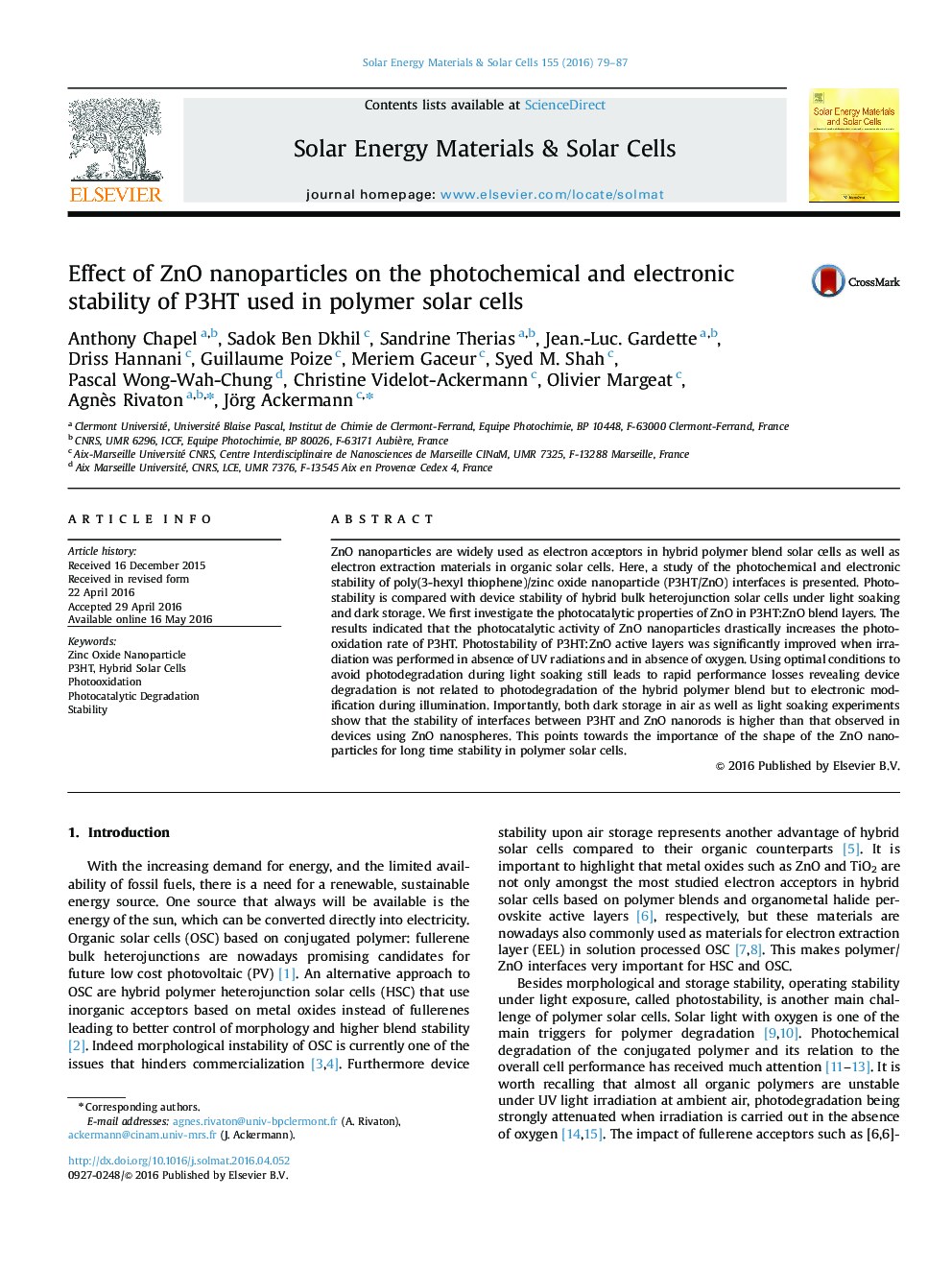| Article ID | Journal | Published Year | Pages | File Type |
|---|---|---|---|---|
| 77492 | Solar Energy Materials and Solar Cells | 2016 | 9 Pages |
•photocatalytic activity of ZnO in ZnO:P3HT blend solar cells•impact of UV radiations and oxygen.•stability tests of solar cell using ZnO:P3HT•importance of nanoparticle shape of metal oxide for long time stability
ZnO nanoparticles are widely used as electron acceptors in hybrid polymer blend solar cells as well as electron extraction materials in organic solar cells. Here, a study of the photochemical and electronic stability of poly(3-hexyl thiophene)/zinc oxide nanoparticle (P3HT/ZnO) interfaces is presented. Photostability is compared with device stability of hybrid bulk heterojunction solar cells under light soaking and dark storage. We first investigate the photocatalytic properties of ZnO in P3HT:ZnO blend layers. The results indicated that the photocatalytic activity of ZnO nanoparticles drastically increases the photooxidation rate of P3HT. Photostability of P3HT:ZnO active layers was significantly improved when irradiation was performed in absence of UV radiations and in absence of oxygen. Using optimal conditions to avoid photodegradation during light soaking still leads to rapid performance losses revealing device degradation is not related to photodegradation of the hybrid polymer blend but to electronic modification during illumination. Importantly, both dark storage in air as well as light soaking experiments show that the stability of interfaces between P3HT and ZnO nanorods is higher than that observed in devices using ZnO nanospheres. This points towards the importance of the shape of the ZnO nanoparticles for long time stability in polymer solar cells.
